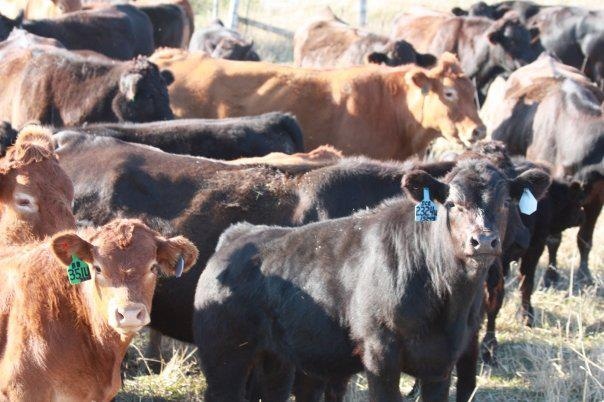To creep or not to creep: That is the question
Industry professionals evaluate the pros and cons of creep feeding spring-born calves during the summer grazing months.
July 7, 2020

This year has been tough for so many, and for farmers and ranchers, 2020 marks another chapter of uncertainty, difficulties and trying to navigate tumultuous waters while achieving profitability and safeguarding the family business.
While some producers have been able to make lemonade out of these 2020 lemons, others are trying to find ways to cut costs, reduce inputs and squeeze every penny out of the dollar in order to survive in these crazy times.
Cutting costs can have immediate savings advantages, but the long-term ramifications may not be so easy to calculate.
A good example of this is looking at whether or not to creep feed during the summer grazing season.
Without question, we always creep feed our calves. We enjoy the benefits of getting the calves accustomed to eating feed before they are weaned.
We feel it gives them a boost in performance and rate of gain. We believe it results in a more uniform, fleshy calf crop that helps even out cows that may not lactate as well as others. As seedstock producers, we are trying to develop bulls that will be ready to be sold as yearlings. And for a small investment, it’s a good rate of return to have a less stressful weaning period where calves are eager to belly up to the feed bunk instead of bawling for days on end.
But just because we’ve always done something doesn’t mean we should continue to do it in the future. To me, it’s important to continually evaluate the pros and cons, to embrace ongoing education on every topic and to make well-informed decisions based on the factors being presented in any given year.
So 2020 is a wildcard. What are you going to do? Creep feed as usual or skip the expense?
I’ve rounded up some articles on this topic that might help you make this decision. Hear from these industry experts on this topic and determine if you’re on the best path for your summer grazing and creep feeding programs.
1. “Creep feeding options: Will it pay?” by Julie Walker, South Dakota State University Extension beef specialist
Walker writes, “Although creep feeding can significantly increase weaning weight, costs associated with creep feeding can result in minimal economic benefit. Therefore, when evaluating the financial benefit of creep feeding, it is important to understand the relationship between the cost of the creep feed consumed and the value of the additional weight gained."
2. “Creep feeding calves” by Steve Niemeyer, University of Nebraska Lincoln Extension educator and Travis Mulliniks, UNL beef cattle nutritionist
According to the article, “Keeping a tight grip on feed costs is a priority for every beef producer. Creep feeding calves can be a good return on investments in certain situations. Maintaining the calf’s efficiency at an early age is becoming much more critical with modern market requirements. The gross income of the cow-calf enterprise is partially dependent on the weaning weight of the calves. Outside of changing weaning date, there are management strategies that can increase calf weaning weight.
“However, chasing increased output or calf weaning weight can have some negative downstream implications to profitability of the cowherd. Strategies to increase calf weaning weight could include increased selection for maternal milk production, increased genetic selection for growth, increase in forage quality consumed by the calf, and creep feeding the calf to increase nutrient intake.”
3. “Is creep feeding beef calves profitable?” featured on The Ohio State University BEEF Cattle Newsletter
“Conceptually, creep feeding provides increased nutrition to growing calves, which increases their weight at weaning. More pounds of calf to sell at weaning increases revenue, but does it increase profit? Past research has shown that supplementation (creep feeding) directly to growing calves significantly affects their weaning weight. Creep feeding may potentially address other concerns such as decreased calf productivity due to undernutrition to dam during gestation.”
4. “5 benefits of creep feeding calves” by Peter Vitti for Grainnews
Vitti writes, “For 2020, the profitability of creep feeding spring calves is nominal with lower predicted feeder prices and relatively stable grain prices. Yet this should not dissuade anybody from creep feeding calves, because as I advocate, the following five benefits of creep feeding calves remain the same: Weaning weights are increased. Producers can average 30-80 pounds per calf of added gain with creep feeding, particularly on large-frame, good-quality steers with a lot of growth potential."
5. “Tips for managing cows through dry conditions” by Karla Wilke for BEEF
Wilke writes, “If a producer has April- or May-born calves, or simply prefers not to wean early, pairs can be maintained in confinement, but several management issues need to be considered. Cow-calf pairs can be confined on pivot corners or fallow ground or a winter feed ground, if desired. Calves will need to have access to feed as well, so supplying 2 feet of feeding space for the cows and 1 foot for the calves is important. Cows can be limit-fed an energy dense diet mixed with poor-quality forages, but the diet needs to meet the demands of lactation.”
I hope these resources help you weigh the pros and cons of creep feeding this summer. I would love to hear your strategies on the topic. Share with us in the comments section below.
The opinions of Amanda Radke are not necessarily those of beefmagazine.com or Farm Progress.
About the Author(s)
You May Also Like





